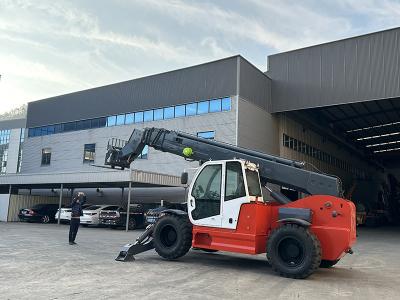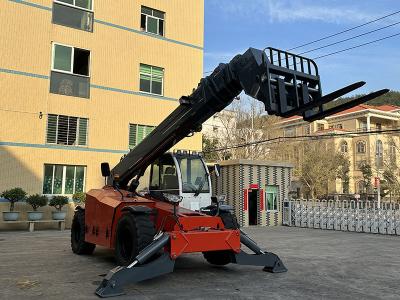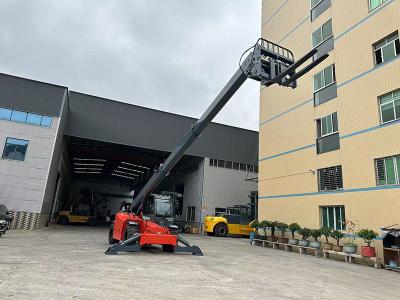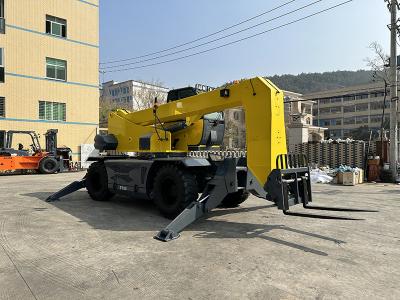Mini articulating loaders play a vital role in today's engineering construction. A good understanding of the characteristics of the loader brake system and simple troubleshooting methods can ensure the normal use of the loader. The following takes the caliper disc brake system widely used in loaders as an example to explain the causes and treatment methods of loader brake system failures.
1. The pressure gauge pressure rises slowly
Main reasons: (a) pipeline leakage; (b) abnormal operation of the air pump; (c) rust and jam of the one-way valve; (d) the oil-water separator drain bolt is not tightened or the pressure regulating valve is leaking.
Troubleshooting method: First, eliminate pipeline leakage, and then check the working status of the air pump. Remove the air pump outlet pipe and press the air outlet with your thumb. If the exhaust pressure is low, it means that the air pump is faulty. If the air pump is in good working condition, check the oil-water separator drain screw plug or pressure regulating valve to avoid bypass and eliminate the fault through inspection. Finally, check the two one-way valves in the three-way joint. If the one-way valve is stuck, the air reservoir will not be able to take in air or the air will take in air slowly. This can solve the problem of the loader's braking system.
2. Insufficient braking force and weakness
Main reasons: (a) Brake oil leakage; (b) Air in the brake oil circuit; (c) Damaged wheel hub oil seal and oil stains on the caliper disc; (d) Severe brake wear and burnt friction surface; (e) Too low air pressure in the air circuit.
The above articulated wheel loader's braking system failures can be eliminated by repairing, adjusting or replacing parts according to their respective causes.
3. Deviation after braking
The direct cause of deviation is the unequal braking torque of the wheels on both sides. Common causes of failure: (a) The brake caliper disc is seriously oily and the friction system is seriously reduced, resulting in unbalanced braking torque. At this time, the oil stains on the brake caliper disc should be removed; (b) The piston of the slave cylinder is stuck and cannot work. Press the brake on a stationary vehicle, observe the working condition of the slave cylinder, and disassemble and inspect it as needed.
4. Brake jamming
Fault phenomenon: The loader has difficulty in starting and moving. After stopping, the caliper is touched by hand and the caliper is hot. Main reasons: (a) The friction plate is worn and thinned, the dust ring is damaged and water enters, and the piston is rusted and stuck; (b) The return spring in the booster pump is weak or broken, and the high-pressure oil cannot flow.
5. Oil mist sprays out when braking
(a) The brake light switch is damaged, and the high-pressure oil sprays out from the switch interface. Replacing the switch can solve the problem. (b) The booster pump piston rod is too long. This situation may occur when the booster pump assembly is replaced. The cause of the loader's brake system failure is: the piston rod is adjusted too long, causing the piston stroke to be too large when the booster pump is working, and the brake fluid flows back from the oil drain hole into the booster pump and sprays out. The piston working stroke should be measured during installation to determine the length of the piston rod.




















